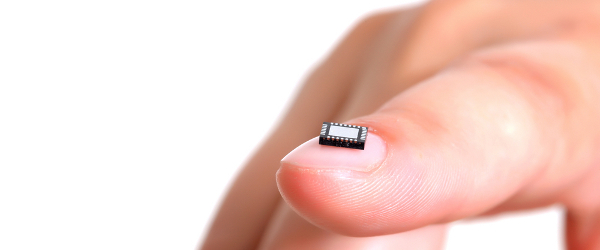
Nanotechonology is one of the current buzzwords of science today, and deals with technology on the ‘nano’ scale. What’s the nano scale!? The nano scale is small that you can’t see it with a regular microscope; in fact, a nanometre is one-billionth of a metre. A regular atom is about one-tenth of a nanometre in diameter.
At this scale, scientists are able to manipulate atoms themselves, and that leads to the creation of all sorts of fascinating and interesting materials. One prime example is that of a carbon nanotube, which is made my rolling a sheet of graphite molecules into a tube. The right combination of nanotubes can create a structure that is hundred of times stronger than normal steel but only one-sixth the weight. This is just one example of the practical use of nanotechnology.
A concise actual definition for nanotechnology, found here, is: "The design, characterization, production, and application of structures, devices, and systems by controlled manipulation of size and shape at the nanometer scale (atomic, molecular, and macromolecular scale) that produces structures, devices, and systems with at least one novel/superior characteristic or property."
What is nanotechnology used for?
Nanotechnology, whilst still being researched and developed, has actually been around for longer than most people think, and is used in many every day products.
Sunscreen

The aluminium oxide that absorbs the Sun’s UV rays actually degrades when mixed with sweat and other molecules. The oxide is mixed with a ‘nano-emulsion’ that protects the aluminium oxide and keeps your skin safer for longer.
Self-cleaning glass

A firm called Pilkington makes something called Activ Glass, which employs nanoparticles to make the glass surface both hydrophilic and photocatalytic. The hydrophilic properties make liquids spread evenly over the surface and the photocatalytic properties allows UV radiation from light to break down and loosen dirt.
Plasters

Yes, believe it or not, most plasters now have nano silver ions that help kill harmful cells and protect from infection.
Case Study: How nano-coating is waterproofing smartphones.
But how can it be used in the future? And what about more technological uses?
Go the next page to find out…
Well, we’re already seeing thousands of applications and concepts for the nanotech that you’ve probably seen already in sci-fi films.
In terms of medical use, fighting cancer is one big application. Nano-particles containing DNA have been used to find bacteria in the bloodstream, determine what kind of infection a patient has and monitor changes in the immune system which lets doctors know what kind of cancer is present.

There are also these little things called nano-flares, which light up when certain conditions are met, for instance, like coming into contact with cancer cells.
In computing, tiny quantum dots are being used to create even smaller and smaller parts. Assemblers, nanoscopic machines that can be programmed to manipulate atoms and molecules are also becoming a reality. Billions of these assemblers working together could actually produce their own material, before replicating themselves to create and manipulate even faster. One day, anything could be replicated, perhaps even water and food – now wouldn’t that solve a lot of problems…

But, of course, now we’re on to the Grey Goo scenario, which is where it gets really scary.
Grey Goo is the hypothetical end of the world scenario where out of control nanotechnology keeps self-replicating and consumes all matter on earth. The term grey goo was coined by nanotechnology pioneer Eric Drexler in his 1986 book Engines of Creation – with the original idea assuming machines were designed to have this capability, wheras popularisations have assumed that machines might somehow gain this capability by accident…like…Skynet.






